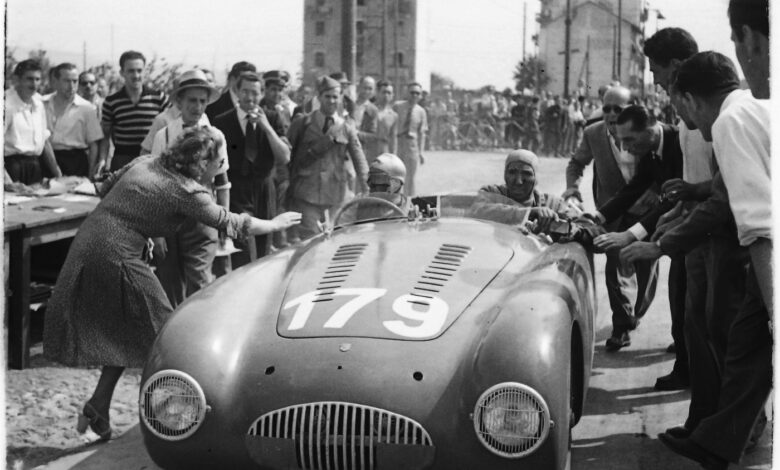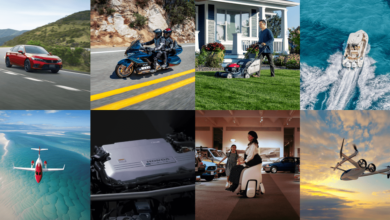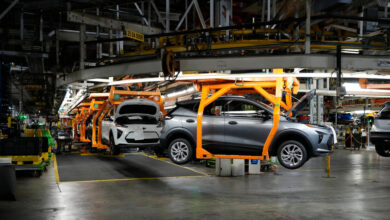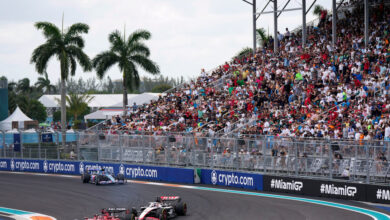Turin’s National Automobile Museum celebrates the Mille Miglia and its 30-year history

From June 12 to Sept. 29, 2024, the National Automobile Museum in Turin is dedicating an exhibition to the 30-year history of the Mille Miglia, from 1927 to 1957, for which the most famous champions of the period competed on a “1000 Miglia” course.
On the occasion of the first stage finish in Turin of the 42nd edition of the Mille Miglia, MAUTO – Museo Nazionale dell’Automobile di Torino celebrates the legendary race with the exhibition UN VIAGGIO LUNGO MILLE MIGLIA: the exhibition can be visited from June 12 to Sept. 29, 2024, is produced in collaboration with the Mille Miglia Museum in Brescia and tells the 30-year history of the race, from 1927 to 1957, for which the most famous champions of the period competed on a “1000 Miglia” course. The exhibition recounts the three decades of the race, with a focus on the most significant years: 1927, the date of the first edition; the revival after the war in 1947; and 1957, the year of Taruffi’s triumph and tragic epilogue. Each of these years corresponds to a key stage in the history of the Mille Miglia: Brescia, the place where it all began; Turin, the symbol of the postwar revival; and Rome, the stage that unites Italy from north to south and the city of Taruffi’s bitter victory. The exhibition is supported by a wide selection of original materials displayed in showcases, most of them previously unpublished, from the Mille Miglia archives that tell the story of the preparations for the race, letters from the stables, relationships with the organizers and materials from the insiders, the Istituto Luce chronicle and Wes Anderson’s art cinema. On display is the 1947 Cisitalia 202 SMM “Nuvolari,” the model in which Tazio Nuvolari was proclaimed the moral winner of the 1947 edition, winning over the public with a spectacular and ill-fated performance.
On the occasion of the departure of the Mille Miglia from Turin and on the opening day of the exhibition, MAUTO also presents the second edition of the Mille Miglia of Ideas entitled Passages and Landscapes. How the Most Beautiful Race in the World Unveils and Reveals the History and Geography of Italy: the review of interventions curated by Gianluigi Ricuperati, who in 2023 had inaugurated the Museum’s 90th anniversary celebrations. Prominent names from the Italian cultural scene will take turns in the MAUTO piazza. Francesco Filippi will tell what our country was like when the Mille Miglia debuted, in the midst of the fascist era. Valerio Magrelli, on the other hand, will alternate readings of his own texts and those of Vittorio Sereni, who dedicated a lyric to the Mille Miglia contained in Diario d’Algeri, a milestone of postwar poetry, exploring an Italy emerging from the tragedy of world war. Touring Club Italiano’s editorial director, Ottavio di Brizzi, will help explore the theme of the landscape narrative of the ’treasure peninsula,’ between tourism, sports and culture. Elisa Gallo, ’soft mobility’ activist, will lead a journey into the future-present of the urban landscape. Photographer Gigi Cifali will close, showing images of a period, around the 1970s, when the link between cars and landscape took on the connotations of social clash and the nightmare terrorism, culminating with the ’Renault 4’ in which President Aldo Moro’s corpse was found.
From June 6 to September 29, a selection of photographic portraits taken by Rodolfo Mailander will be on view at the space in front of the Project Room. Enzo Ferrari, Juan Manuel Fangio, Stirling Moss, Alberto Ascari, driver Gilberte Thirion are just some of the faces immortalized both during the competition and behind the scenes. The 1000MIGLIA BY MAILANDER exhibition is part of a project carried out by four of Italy’s leading auto museum hubs – Museo Mille Miglia in Brescia, Museo Nicolis in Villafranca di Verona, Museo Fratelli Cozzi in Legnano and Museo Nazionale dell’Automobile – with the Fondazione Gino Macaluso per l’Auto Storica.
“This very important exhibition also inaugurates a collaboration with the Mille Miglia Museum, which we want to develop in a privileged way, thus reconstructing a historiographical bridge between Turin and Brescia, already embodied by the figure of Giovanni Canestrini, to whom the MAUTO Documentation Center is dedicated, who in 1926 is the protagonist between Milan and Brescia of the birth of the legendary adventure of the Mille Miglia, the most important race in the world. And this exchange is within the broader framework of close collaboration among Italian automobile museums under the careful guidance of ACI Italia, with ACI Storico, a partner of the National Automobile Museum since its founding in 1933. In particular, this exhibition crystallizes MAUTO’s new strategic path that intends to work on the multicultural profile of the automobile, thought of not only as a technical phenomenon-design industry performance and innovation-but also and above all as a generative core of suggestions and formative values since the late 19th century and still a crucial cultural factor in our global society. This strategy is embodied in particular by La Millemiglia delle idee, which, under the multifaceted leadership of Gianluigi Ricuperati, will bring together multiple readings around the theme of the Mille Miglia: history, poetry, photography, travel and, in homage to the most current social needs, even soft mobility,” says Benedetto Camerana, President of the National Automobile Museum.
“The 1000 Miglia was born in 1927 to raise political and public awareness of the need for a road network that would promote transportation and with it the nation’s economic development. Since then we have seen year after year the growth and technological development of the cars and in parallel the adaptation of the road infrastructure,” says Piergiorgio Re, President Automobile Club Torino.
“This exhibition represents an initiative of great merit and cultural value. It is a first event in synergy between two automotive museums, which transcends geographical boundaries by concretizing a common project to promote and enhance the history of the automobile, which is expanded with the other exhibition, dedicated to the photos of Rodolfo Mailander, which in addition to the Mille Miglia and MAUTO involves the Nicolis Museum in Villafranca di Verona, the Fratelli Cozzi Museum in Legnano and the Gino Macaluso Foundation for Historic Cars in a single project,” says Maria Bussolati, Director of the Mille Miglia Museum.
“The exhibition outlines a never-before-seen 1000 Miglia, told from research work and enhancement of the archives and objects in the collection of the Mille Miglia Museum that constitute a small Wunderkummer of the race. We think it would have appealed to Carlo Biscaretti, a great admirer of the race who, in an interview with Renzo Castagneto reported in the 1951 yearbook of the race, confided in him that he owned his own small museum of the Red Arrow, speculating that perhaps one day an authentic museum might exist,” says Ilaria Pani and Paolo Mazzetti, curators of the exhibition
“We worked with great care on a layout design that would enhance the very rich variety of materials, displayed to evoke the festive atmosphere of the race and the social bearing of the event and linked together by a red arrow, the emblem of the historic competition. The entrance to the exhibition is marked by a large bow-an archetypal symbol of the rites of passage in the city. The posters and graphic works – recalling Deperian futuristic rhetoric – mark the succession of the various editions with a tight metric and dialogue with the poetic approach of the photographic works,” says Lorenza Bravetta, director of the National Automobile Museum.
Image: Cisitalia SMM as it passes through Turin (1947)
| Turin’s National Automobile Museum celebrates the Mille Miglia and its 30-year history |
Warning: the translation into English of the original Italian article was created using automatic tools.
We undertake to review all articles, but we do not guarantee the total absence of inaccuracies in the translation due to the program. You can
find the original by clicking on the ITA button. If you find any mistake,please contact us.



